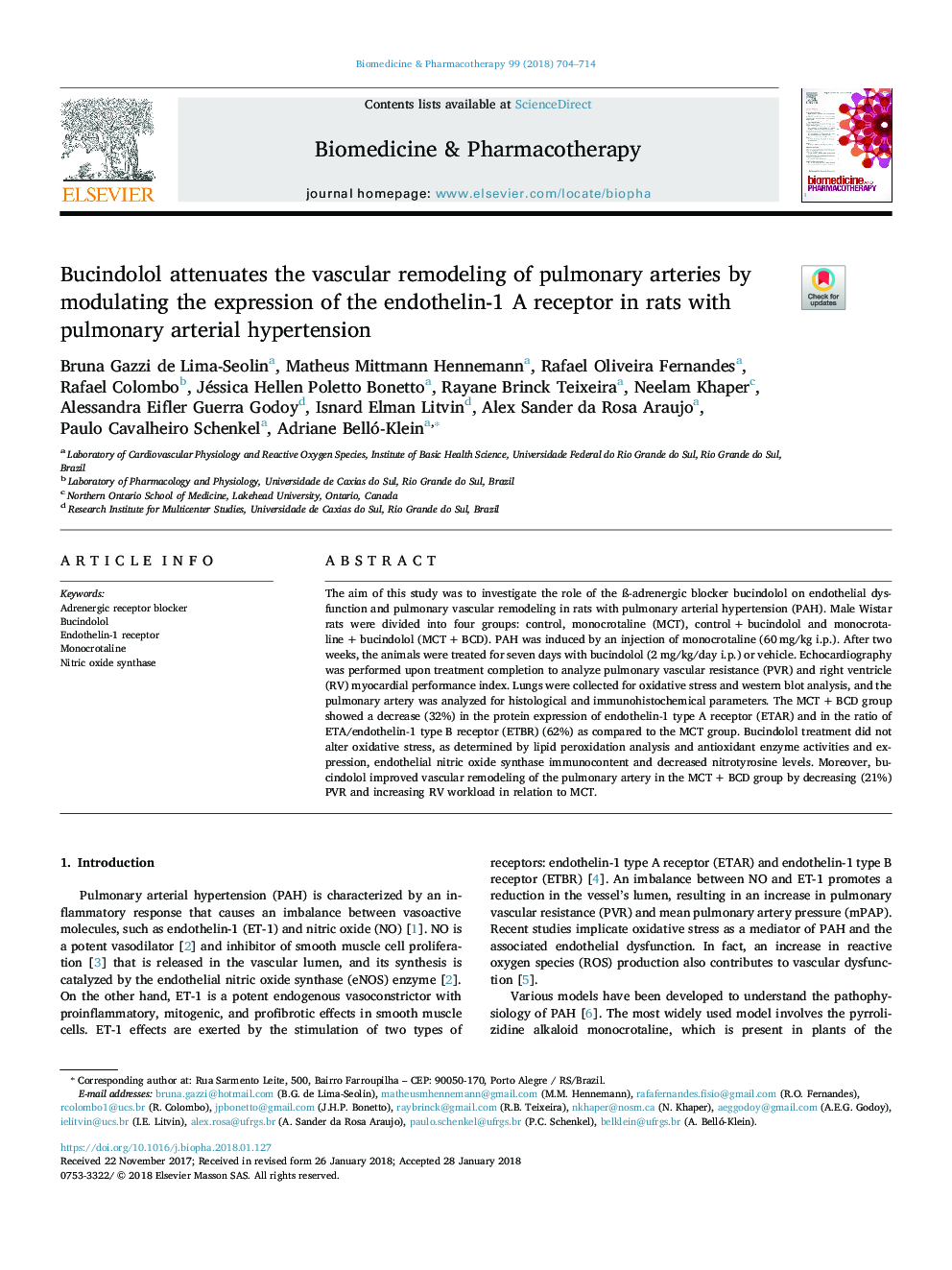| Article ID | Journal | Published Year | Pages | File Type |
|---|---|---|---|---|
| 8526352 | Biomedicine & Pharmacotherapy | 2018 | 11 Pages |
Abstract
The aim of this study was to investigate the role of the Ã-adrenergic blocker bucindolol on endothelial dysfunction and pulmonary vascular remodeling in rats with pulmonary arterial hypertension (PAH). Male Wistar rats were divided into four groups: control, monocrotaline (MCT), controlâ¯+â¯bucindolol and monocrotalineâ¯+â¯bucindolol (MCTâ¯+â¯BCD). PAH was induced by an injection of monocrotaline (60â¯mg/kg i.p.). After two weeks, the animals were treated for seven days with bucindolol (2â¯mg/kg/day i.p.) or vehicle. Echocardiography was performed upon treatment completion to analyze pulmonary vascular resistance (PVR) and right ventricle (RV) myocardial performance index. Lungs were collected for oxidative stress and western blot analysis, and the pulmonary artery was analyzed for histological and immunohistochemical parameters. The MCTâ¯+â¯BCD group showed a decrease (32%) in the protein expression of endothelin-1 type A receptor (ETAR) and in the ratio of ETA/endothelin-1 type B receptor (ETBR) (62%) as compared to the MCT group. Bucindolol treatment did not alter oxidative stress, as determined by lipid peroxidation analysis and antioxidant enzyme activities and expression, endothelial nitric oxide synthase immunocontent and decreased nitrotyrosine levels. Moreover, bucindolol improved vascular remodeling of the pulmonary artery in the MCTâ¯+â¯BCD group by decreasing (21%) PVR and increasing RV workload in relation to MCT.
Related Topics
Health Sciences
Medicine and Dentistry
Oncology
Authors
Bruna Gazzi de Lima-Seolin, Matheus Mittmann Hennemann, Rafael Oliveira Fernandes, Rafael Colombo, Jéssica Hellen Poletto Bonetto, Rayane Brinck Teixeira, Neelam Khaper, Alessandra Eifler Guerra Godoy, Isnard Elman Litvin, Alex Sander da Rosa Araujo,
